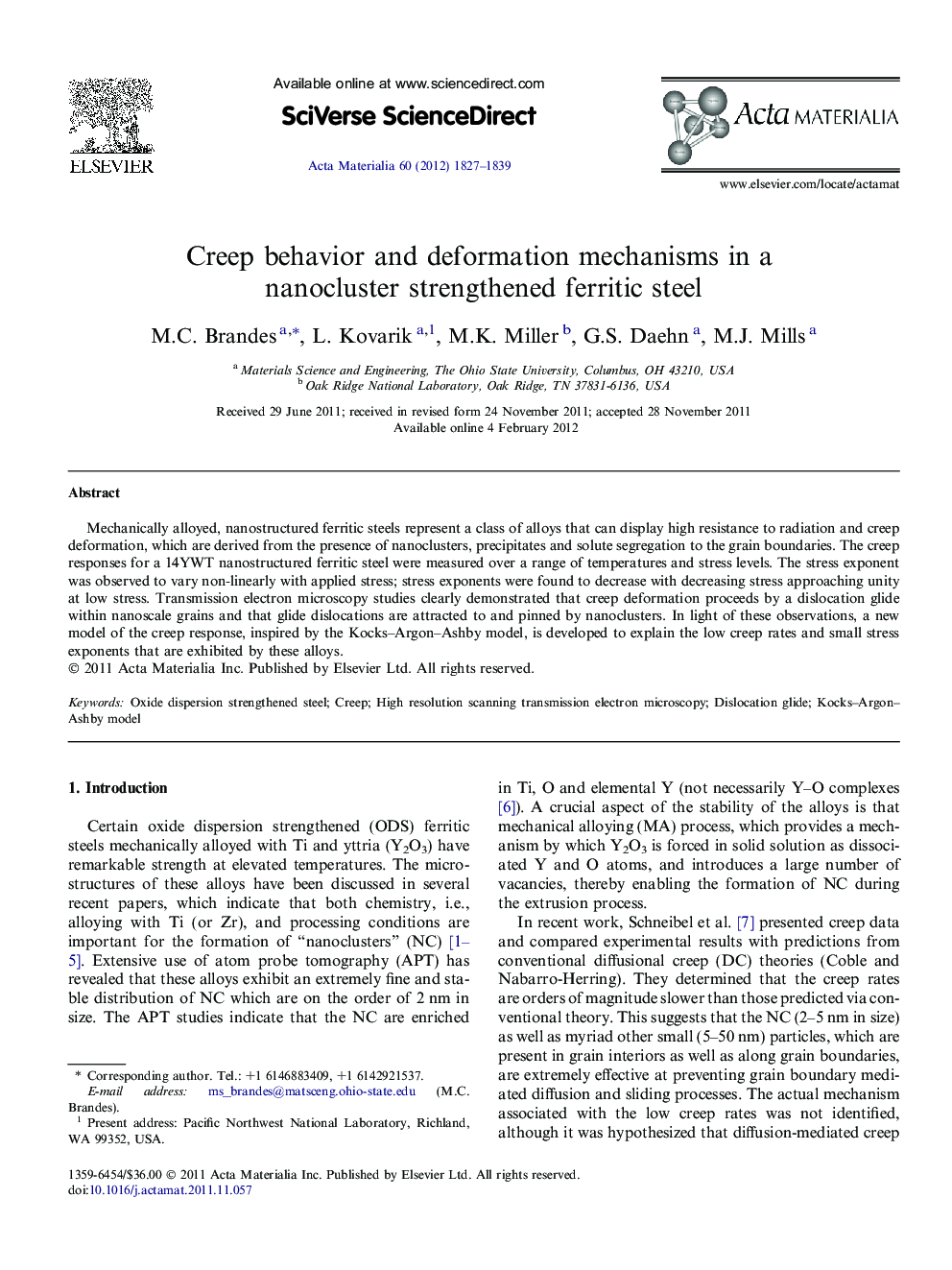| Article ID | Journal | Published Year | Pages | File Type |
|---|---|---|---|---|
| 1446840 | Acta Materialia | 2012 | 13 Pages |
Mechanically alloyed, nanostructured ferritic steels represent a class of alloys that can display high resistance to radiation and creep deformation, which are derived from the presence of nanoclusters, precipitates and solute segregation to the grain boundaries. The creep responses for a 14YWT nanostructured ferritic steel were measured over a range of temperatures and stress levels. The stress exponent was observed to vary non-linearly with applied stress; stress exponents were found to decrease with decreasing stress approaching unity at low stress. Transmission electron microscopy studies clearly demonstrated that creep deformation proceeds by a dislocation glide within nanoscale grains and that glide dislocations are attracted to and pinned by nanoclusters. In light of these observations, a new model of the creep response, inspired by the Kocks–Argon–Ashby model, is developed to explain the low creep rates and small stress exponents that are exhibited by these alloys.
